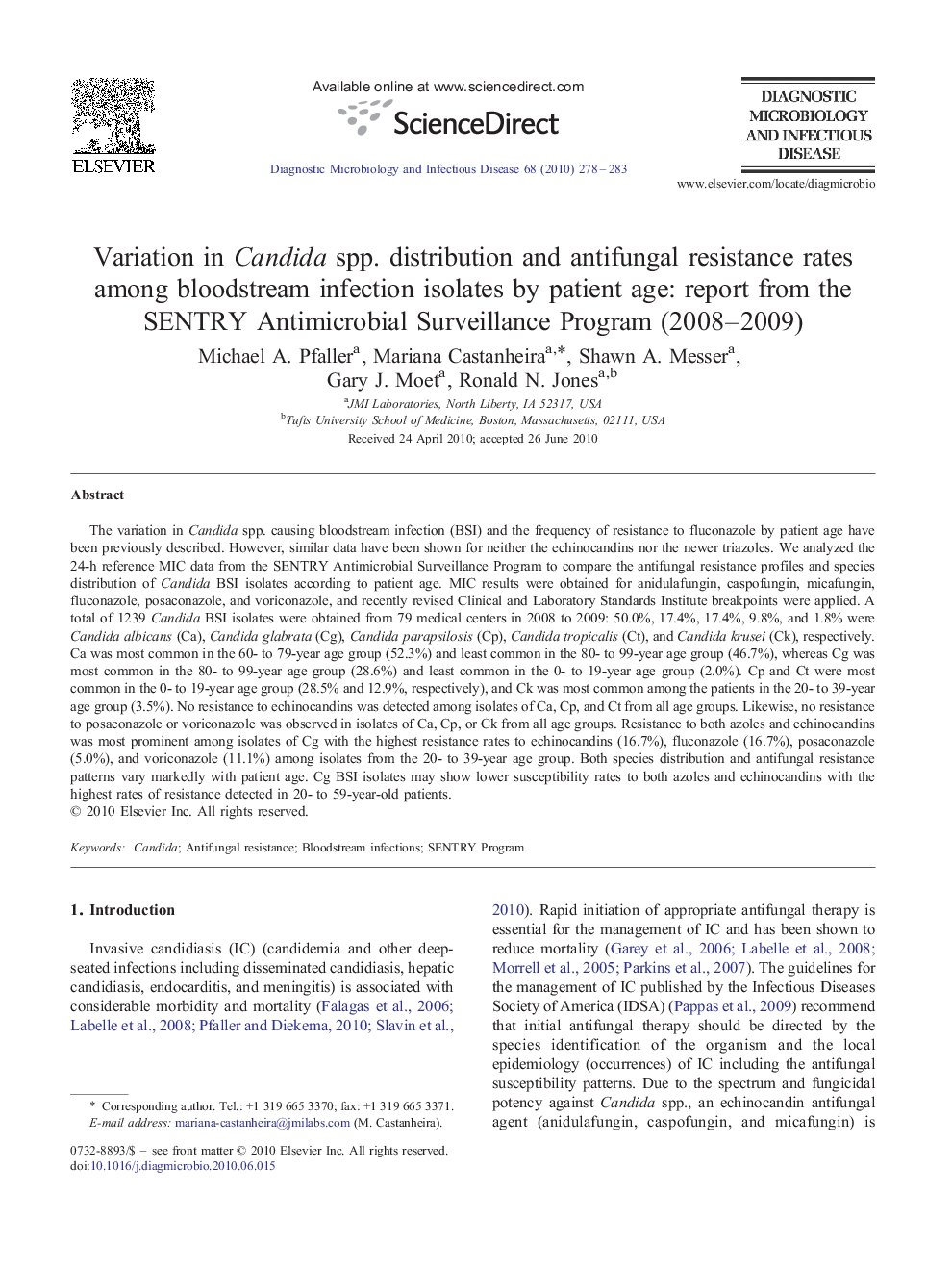| Article ID | Journal | Published Year | Pages | File Type |
|---|---|---|---|---|
| 3347650 | Diagnostic Microbiology and Infectious Disease | 2010 | 6 Pages |
The variation in Candida spp. causing bloodstream infection (BSI) and the frequency of resistance to fluconazole by patient age have been previously described. However, similar data have been shown for neither the echinocandins nor the newer triazoles. We analyzed the 24-h reference MIC data from the SENTRY Antimicrobial Surveillance Program to compare the antifungal resistance profiles and species distribution of Candida BSI isolates according to patient age. MIC results were obtained for anidulafungin, caspofungin, micafungin, fluconazole, posaconazole, and voriconazole, and recently revised Clinical and Laboratory Standards Institute breakpoints were applied. A total of 1239 Candida BSI isolates were obtained from 79 medical centers in 2008 to 2009: 50.0%, 17.4%, 17.4%, 9.8%, and 1.8% were Candida albicans (Ca), Candida glabrata (Cg), Candida parapsilosis (Cp), Candida tropicalis (Ct), and Candida krusei (Ck), respectively. Ca was most common in the 60- to 79-year age group (52.3%) and least common in the 80- to 99-year age group (46.7%), whereas Cg was most common in the 80- to 99-year age group (28.6%) and least common in the 0- to 19-year age group (2.0%). Cp and Ct were most common in the 0- to 19-year age group (28.5% and 12.9%, respectively), and Ck was most common among the patients in the 20- to 39-year age group (3.5%). No resistance to echinocandins was detected among isolates of Ca, Cp, and Ct from all age groups. Likewise, no resistance to posaconazole or voriconazole was observed in isolates of Ca, Cp, or Ck from all age groups. Resistance to both azoles and echinocandins was most prominent among isolates of Cg with the highest resistance rates to echinocandins (16.7%), fluconazole (16.7%), posaconazole (5.0%), and voriconazole (11.1%) among isolates from the 20- to 39-year age group. Both species distribution and antifungal resistance patterns vary markedly with patient age. Cg BSI isolates may show lower susceptibility rates to both azoles and echinocandins with the highest rates of resistance detected in 20- to 59-year-old patients.
